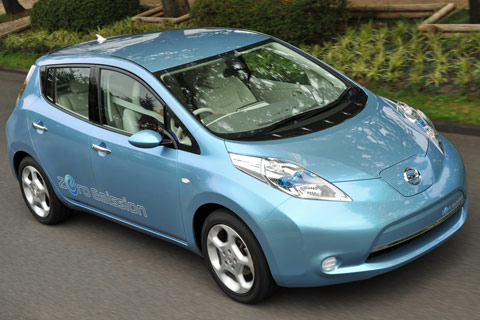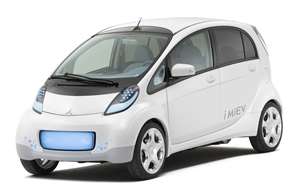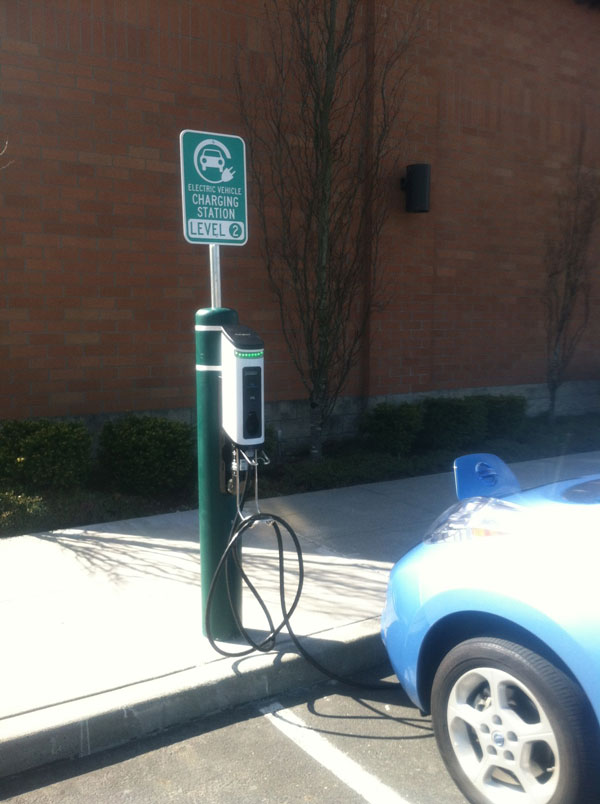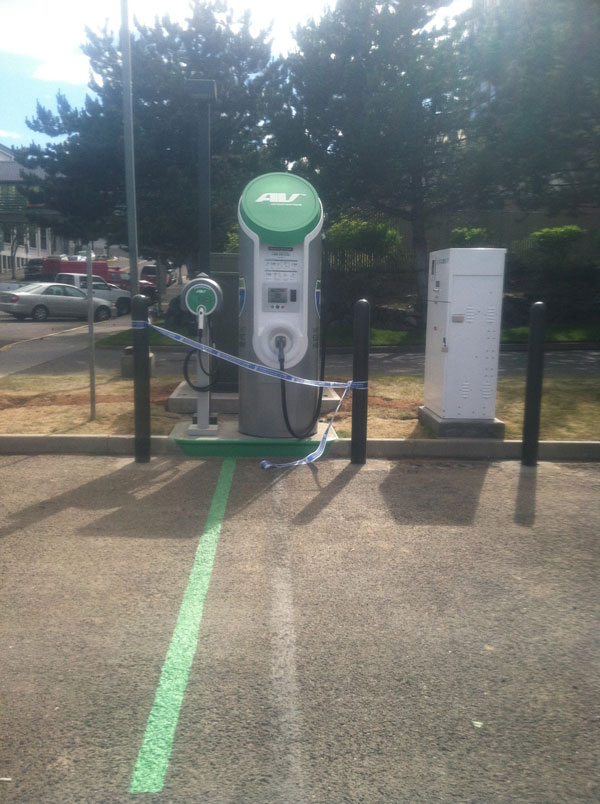By Matt Stroud
As the price of fuel increases, many of us are searching for a cleaner and more efficient mode of transportation. We would all like to stay away from the gas station as long as possible. For many years now, new car options have been emerging, including hybrids, ultra efficient gasoline or diesel, alternative fuel, and electric vehicles. In this article, we are going to explore the electric vehicle charging station and some of the potential risks involved with this power source for vehicles.
Electric vehicles (EVs) have an advantage over other new technologies, such as hydrogen, since the infrastructure for distributing electrical power is already in place (the electrical grid). There is no need to develop new types of filling stations or transport hydrogen or other dangerous gases on our highways. Installation of charging stations, which use the existing electrical grid, is easy and is already happening in many places near you.
EVs have been around since the late 1800s, but the modern era of electric vehicles started in the early 1990s. This was a time when auto manufacturers were trying to meet emission standards set by the state of California. After the regulations for emissions were eased as a result of litigation, auto manufacturers stopped development of EVs until recent gas price increases again fueled customer demand for such a vehicle.
The statistics below represent the starting prices and Environmental Protection Agency (EPA) estimated ranges of current production EVs at the time of this publication. Tax incentives are currently available that lower the purchase price of a 2012 model by as much as $7,500.

Nissan Leaf: 73 mile range
Price starting at $35,200

Tesla Roadster: 244 mile range
Currently sold out in North America. Possible 2014 model

Tesla Model S: 160/230/300 mile range (depending on model)
Prices starting at $49,900

Mitsubishi I-MiEV: 62 mile range
Prices starting at $29,125

Ford Focus EV: 76 mile range
Prices starting at $39,200
EVs shift the way we think about transportation. An EV can only go so far before it must be recharged. Because the EV range is limited, their use is primarily for planned short trips such as normal commutes to and from work. A common concern for consumers is something called “range anxiety.” For this reason, an EV owner needs to know where to recharge their vehicle. There is an app for that! Station locations, current charging status, and time to a full state of charge can be viewed on a smartphone.
An early generation of charging stations followed the Society of Automotive Engineers (SAE) standard J1773 in the early 1990s. This charging station used a paddle-type inductive charging connector and was used for the GM EV1, Toyota RAV4, Ford Ranger EV, and the Chevrolet S10 EV. This charger was called the MagneCharge 220V inductive type charging plug. It was available in small and large paddle designs. Some are still in use for those older EVs that are still on the road today, most commonly the first generation Toyota RAV4.

MagneCharge J1773
Current charging station connections have now been standardized by the SAE standard J1772-2009. This standard incorporates connection pin locations within the receptacle and connector, wiring type, and software communication protocols to allow the same equipment to be used for all vehicle types, regardless of manufacturer. These connectors consist of five pins, including three large pins for electricity transfer, commonly referred to as “hot”, “neutral”, and “ground”. The other two smaller pins are used for communication with the vehicle to establish the charging needs and to provide a signal to interrupt current flow when the release button on the charging connector is pressed prior to removal from the vehicle. The ground connection is constantly monitored by the charging station to ensure the circuit is electrically sound.

J1772-2009 connector
There are three station types currently available in the United States.
Level 1:
Mode 1- AC 110V (Plug in wherever you find an outlet)
This type of slow charging can require 10 or more hours to replenish a depleted battery. Since you can plug in wherever you want, there is no dedicated circuit for charging and you are more likely to trip a circuit breaker. Because of the endless possibilities for where to plug in, there is some risk of household wiring being inadequate for the task. The SAE 16A limit on this type of charging can become an issue because other devices may be using the circuit at the same time.
Mode 2-AC 120V (Plug into a dedicated circuit in your garage)
This type of charger requires a dedicated 20A circuit breaker for the outlet used to charge the vehicle or a cable with circuit protection built in. Some auto manufacturers use on-board chargers for this type of connection that regulate current flow.
Level 2:
AC 240V (Home charging station)
This type of charging station can recharge a vehicle in four to six hours. It requires a 30A, 240V circuit and professional installation of the charging unit in the home. Charging control and circuit protection functions are included in this charging station to prevent circuit overload. A typical home installation is pictured below.

Most EV drivers plan to charge their vehicles at home. A home charging station can take advantage of the lower electrical rates offered during low-demand times such as the middle of the night and early morning. The station can plan when to charge the vehicle based on demand for power on the grid as a whole and the expected time of next use for the vehicle. Depending on how far you drive, the real-world cost to recharge has been reported by one of our students to be approximately $20.00 per month (unless you plug into your neighbor’s house). This was significantly less than the student was spending on gasoline every month.
Commercial versions of level 2 charging stations are becoming much more common. The photo below was taken at a local pharmacy that is providing free charging access for their customers.

Level 3:
480V AC commercial 3 phase dedicated transformer converted to DC 500V (The closest thing to a gas station)
Fast charging stations can reduce charging times to less than one hour, but do not provide a full state of charge (80%). Batteries cannot be fully charged at that rapid pace. Just like charging an self-contained breathing apparatus cylinder quickly, batteries that are charged quickly do not reach a full state of charge because of heat buildup. Level 3 charging stations are a much more substantial and expensive installation, and are therefore only available on a commercial level. It should be noted that not all vehicles are compatible with a Level 3 charging station. Currently the Nissan Leaf and Tesla Model S have an option for a Level 3 charging connector.

Level 3 charging connector for a Nissan Leaf (on the left side)
Below is an example of a Level 3 station as part of the West Coast Green Highway in Wenatchee, Washington. This “Electric Highway” was established to make electric vehicle charging and longer distance driving easier for EV owners. This network of charging stations was established along the I-5 freeway corridor on the west coast of the United States from the Mexican border all the way into Canada.

For a list of charging stations on the West Coast Green Highway, follow this link: http://evsolutions.avinc.com/services/subscriber_network/
All charging station installations above Level 1/mode 1 require electrical permits for installation in compliance with the National Electrical Code (NEC). NEC standards apply up to the point where the charging station is connected, but do not extend to the charging station itself.
Now that we have identified the types of charging stations, let’s examine the types of potential dangers involved.
Automatic shut-off during drive-away event
Vehicles are designed to prevent “ignition on” while they are plugged in. It is therefore not possible to drive away from a charging station while plugged in.

Typical fuel hose break away (Toyota Prius)
Car-versus-charging station collision:
The charging station mounting pole in the ground could potentially be energized if it has been damaged. It could energize the vehicle, as well. This is no different than any other vehicle collision with an electronic device. Your goal as a first responder is to find out the ownership of the charging station and the location of the shut-off point for power. Depending on your local utility company, utilities are responsible only up to the point where the meter is installed. All components after the meter are considered consumer installed. A circuit breaker panel is required in each installation. Find out where the circuit breakers are, who owns them, and how to turn them off at the meter. Shut-off points could be inside structure, in a basement (if it’s a pre-1980 home), etc. Forced entry may be necessary for access to the shut-off point.
EV owners are using smartphone apps to find locations of commercial stations. You can find them the same way before they are an issue and scout them for power down. Contact the owner/business and see what is necessary for power-down access. If a power pole is an issue, (before the meter) you would call the utility for shut off. Grid shutdown may be necessary. Treat it like any other utility power concern. System equipment is designed with safety measures; your concern is power feed shutdown to the charging station.
Car fire while still plugged in (home charging station)
The charging system connector is designed to melt away and fall off from the vehicle (similar to a barbeque propane tank plastic connection melting and sealing the propane tank). Treat this situation as a normal house fire with consideration to utilities.
Car fire while still plugged in (commercial application):
Locate utility shut-off if possible. Handle vehicle fire appropriately.
Vandalism of public access station:
The charging station cord is not energized until a vehicle is plugged in. There will be no power on bare wires if a cord has been stolen by local copper “recyclers.”
Inductive charging (magnetic field induced battery charging) is being developed that would eliminate safety concerns such as vandalism/theft of copper wire and possible collision with the station. There would also be no wear-and-tear on plugs or charging cables. Inductive charging, however, has possible concerns regarding proximity to electrical fields. This type of charging is not yet in production.
As we have shown, the risks that are posed by EV charging stations are no greater than other electrical devices. Once a level of understanding is reached regarding the combination of transportation and the electric grid, procedures that are already in place can be used to mitigate dangers that may be encountered when responding to incidents regarding EV charging stations. Firefighters should know what they have in their area and find out how to power it down before they have an incident response.
Matt Stroud is a 23-year veteran of Toyota Motor Corporation, a Toyota-certified master diagnostic technician and an ASE certified master diagnostic technician, with 10 years certified in hybrid technology. Matt has completed multiple extrication courses, giving him a strong knowledge base of fire tactics and terminologies. Because of heavy demand from the fire service, Matt founded MGS TECH in 2007 with the goal to teach firefighters/EMS personnel how to safely manage hybrid and new technology vehicle incidents.


